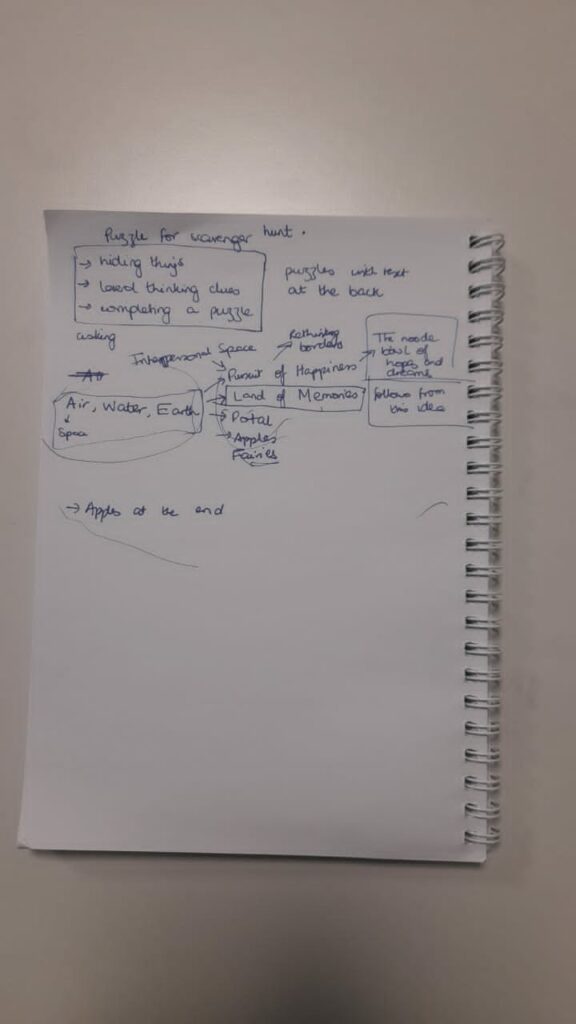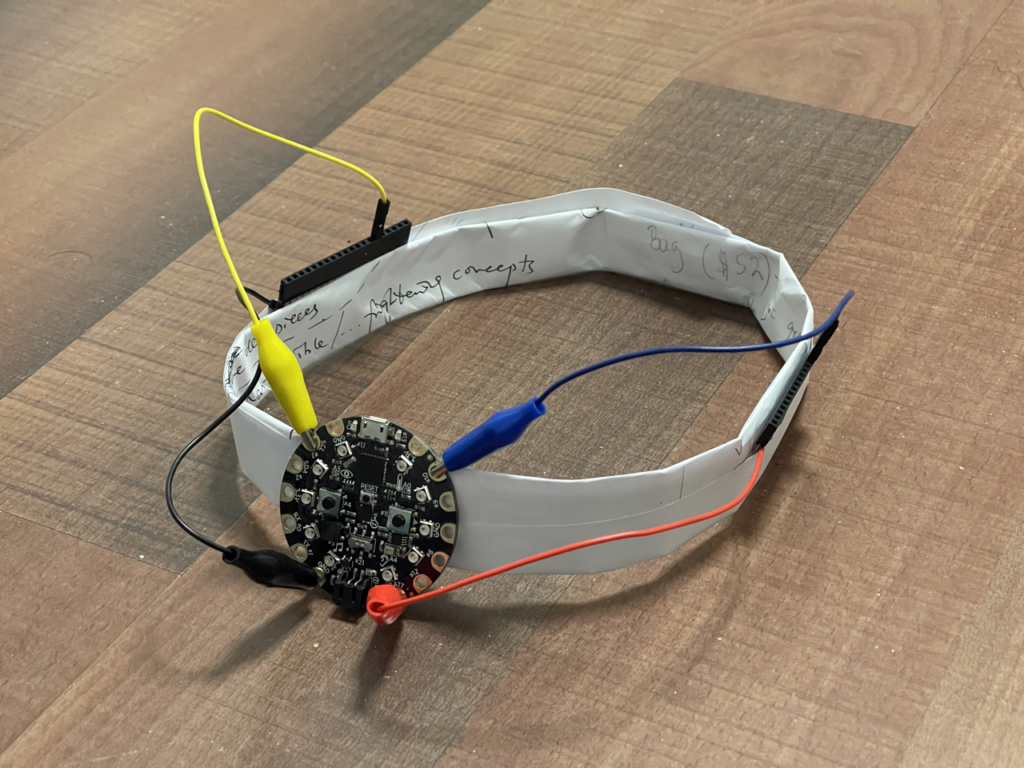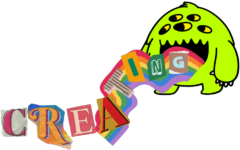Similar to Ephemeral Tomorrow, their work focuses on the use and interpretation of data, most of them being real-time. Their core value is the intersection of art, design, and technology, which connects to exactly what this core class is about. They promotes the use of AI to promote human development instead of being afraid of replaced by it. One of their work is called a “sound sculpture”, which involves 1) dancers’ interpretation of the sound and 2) “sculpting” the dancers’ movements using algorithms. Another one involves a piece produced by non-coordinating cello players reacting to different VR scenes.
Author: Oscar Wang
Final Project Discussion 3 – Oscar/Shahram/Siddhant
Among the three plans we discussed yesterday, we decided to go with the Scavenger Hunt idea which is technically easy and not boring.
The audiences are sent out on a quest for our in-class creative projects hidden somewhere in the venue. The locations of them are suggested by clues created through lateral thinking. The projects form a puzzle, symbolizing a “land of memories” for the past.
A soundtrack will be played incorporating our creative projects during the hunt. The background of the puzzle, land of memories, is based on Oscar’s assignment 2. Each color corresponds to an assignment. They are interconnected through the logic shown in the following picture. Projects Included: Sid #1 Space (Air), Shahram #1 Underwater (Water), Oscar #2 Land of Memories (Earth), Intercampus Portals, Apple Fairies, Pursuit of Happiness, Noodle Bowl of Hopes and Dreams…
The back of the puzzle shows the creative strategies in an infographic. Alternative: a video showing our transition and strategies will be played once the puzzle is completed. Apples will be given at the end, signifying the growth of us and the audience.

Final Paper – Oscar Wang
“The creation of something new is not accomplished by the intellect but by the play instinct acting from inner necessity. The creative mind plays with the objects it loves”
–Carl Jung
I have always been regarding myself to be someone with creative potential. Since childhood, I have been living with the world of my imagination and have long been intrigued by exploring the non-stereotypical and unconventional. Nevertheless, I have also been a person with affection towards structural and systematic disciplines, attaining top-tier grades in school subjects such as mathematics, computer science, physics, and chemistry. I have long been living with conflicting selves, willing to express my creative side but suppressed by external doubt and fear of exposing anything too personal, including my skills, thinking, and uniqueness. I have chosen NYUAD, engineering, and more importantly, this creating class, to try to solve my self-doubt on creativity and discipline, to learn to employ creativity in my future academics and careers, and to, hopefully, elegantly settle the aforementioned “conflict” and truly embrace the wonderful concept of “the intersection of arts and technology”.
Regarding these goals, I believe that I have transcended myself as I am now closer to them. Through the readings and assignments, I now can more confidently embrace my creativity and can learn to use them in a controlled way. Before this class, I believed that the difference in creativity between people is only determined by their pre-wired “talent”, so average people like me can only wait until it strikes, just like finding treasures in the ocean. I still remember my first assignment, when I came up with analogies, meanings, and interpretations of the word “desert” but failed to find the best “idea”. In fact, this was already some lateral thinking after I learned the analogy method. All it takes then was to get my hands on, to be sure about myself, and to perfect from trials and errors — just like the group that was asked to make the most pots in Art & Fear. Moreover, the daily making assignments facilitated this transition process from solely imagining to starting making. For example, I started my assignment 6 (How to get to School on Time?) with just three ideas, and the latter three came by combining asking “what if” and “why” during the making process. These creative strategies covered in class, the readings, and implemented by the assignments are like maps, directing me to “find more treasures” and “find them faster”. In another way, I also learned to look “beyond treasures”, in that some ideas may not sound genius at first but perhaps wonderful when the making process starts. Apple fairies might sound impractical and imperfect from a pure engineering, result-driven, vertical perspective, but wouldn’t we all love their elegance when we just adopt this concept first and then realize later that they can actually be implemented with current and near-future technologies, as well as their immense marketing potential.
Class visits accomplish more than learning about works and creative processes. They are also chances for me to meet new, interesting, and respectful people and communities. I had the chance to learn about new forms of art, which in turn let me realize that art is not defined by external criteria but by whether their creating processes relate to a part of the artists that they are willing to explore and show. Ming Poon created social-experimental dance pieces such as Undressing Room and Project June 4th. He may have used simple techniques, but the chill they gave was extraordinary when I realize how magical it is that he could bring people together to achieve art or political activism. Ephemeral Tomorrow created hardcore scientific installations that engage the public and show them the beauty of real-time data and astronomy in a form that I have never seen before. The carefree working style of Kollage Kollectiv and the embracing environment of field.io resonates with me on the importance of mental enjoyment in addition to pure skills, which can efficiently boost our creative energies just like what the book Flow mentioned about the Flow State. In fact, I found none of them boring and can extract the best from each talk.
Last but not least, I would love to appreciate the importance of wellness stressed by the professor and respected by the class. Meditation helps bring me back to the present in this bustling world. Moreover, being extremely sensitive to interpersonal dynamics and new to sharing to others my creativity and everything else that was “too personal” for me in the past that I was only willing to share with myself, creating and maintaining a “safe zone” is initially important for me, and I now have the confidence to say that I will grow till I can gradually let go my dependence on a deliberate “safe zone”.
Reading Response 8 – Flow: Paths of Liberation and the Conditions of Flow
The first part of the reading summarized the techniques and importance of freeing one’s consciousness from the domination of social controls and biological impulses. The second part of the reading is more relevant about the ways to control consciousness in order to maintain the flow state. Flow state refers to the state where one is so immersed in his or her tasks so that external attention or even self consciousness becomes irrelevant. The practitioner is so self-motivated to do the work that he or she constantly gains satisfaction from it.
I feel that what I said in class about increasing the assigned work time between daily making assignments is actually intended to maintain good flow for me even if I did not know this concept before hand. Flow is a balance between complexity and skills. For example, if my vision for creative assignments are complex, my limit in skills may require the time to be lengthened to reduce anxiety. Another surprising yet reasonable connection the authors made was religious rituals as tasks to maintain flow. Since religion are the earliest agent to create order and higher causes in our consciousness, the rituals should be intuitively remedial for mental health. Generally speaking, the author, as well as me, believes finding enjoyment in any task given is essential to maintain a good mental health and high productivity.
Class Visit 5 – Mariana Cavalho
- Experimental Sound Artist, focuses on sound art, body and vibrations, “inner listen”…
- Casual talking style but feels very confident about her work
- Prepared Piano (e.g. John Cage): Modify the piano strings by putting objects etc.; Free improvisation; Graphical Score; Engage with People; Body + mind practice experiences inspired her to put body into music; interested later in propagation of sounds through different media (hydrophone and the fan instrument)
- Estudo em Nylon: Extend piano strings to space
- Nylon Bites: Bone conduction and a type of microphone that captures what each ear hears
- Me Alimento de Voces: Sing inside the mouth; “eating voices”; research-based project; has health concerns
- Creative Practices: Deep Listening; Collaboration; Readings, theory and research.
Final Brainstorming 2 – Oscar / Shahram / Siddhant
Our group focuses on one of the three possible plans (will be settled tomorrow). The third one is most interesting and the first one is the easiest in terms of implementation.
1. Digital Pacman Project
i) Materials Needed
Paper, Speakers, LEDs
ii) Description
– Simple sound/light as beacon of the QRs
– User scans QR code posted on the walls, plays a pacman game, and get to see our assignments and movies showing our creative projects and process
– Pacman game with Shahram as the pacman and the professor as the “monster”
2. Scavenger Hunt
i) Materials Needed
Paper, Speakers, LEDs, Beamers
ii) Description
– Simple sound/light as beacon of the clues
– The clues are tied to the creative process of that assignment. (e.g. Random Stimulation: people + mouth = entrance)
– User find models/posters of our assignments using the clues
– For each assignment, a part of the final code is given
– The clues are set along the path the users are likely to move, leading to the tower
– The final summarizing video (animation on lateral thinking) is set on the tower where user input his or her unique code, use a beamer to project it
3. “Metta” Sound + Vision Meditation Dome
i) Materials Needed
Beamer, Speakers (Or we are thinking of using device speakers as we want our sound to blend in with the ambience)
ii) Description
– Metta is a Buddhist term of loving-kindness. Embrace your surroundings and your creative, childlike thoughts that comes randomly and make sense of it.
– Engages the Audience, a guide of meditation is needed (e.g. Sid). Meditation is a core part of our class and stimulus to our creative process.
– It will be best if the whole tower space can be used as the dome
– Background Music will be AI-generated combining Oud / Arab music and Sufi Music. Some of our assignments are AI-generated and we believe that they can be part of our creative processes as well. It can also incorporate Sid’s Assignment 2, on the sounds of silence
– Beamers are used to project effects on the surrounding walls and tower dome
– The meditation engages audience to take part in our creative process.
– Beamer effects shows elements from assignments (e.g. apple fairies flying, Shahram’s “pursuit of happiness”), readings (e.g. reversal process = moon falling to the earth…; ), explicit notifications of creative strategies (e.g. words)
– Beamer effects can also show the creative processes introduced through a way similar to my assignment 2 (land of memories), as our creative processes are our memories for the past few weeks and are likely to become long-term.
– We should give people apples after each session
Reading Response 7 – Fear about Others
This part is very informative to me as I have always had a strong inner critic about if I am doing good enough so that others might not think of me as incompetent, “weird”, or in other negative ways. I could see me resonating with this chapter when I read the names of the sub-sections — I have always treated others and their opinions at first by understanding, acceptance, and approval. If I disagree with them, I instinctively try to think of the reasons of this disagreement and rephrase my expression according to that. Hence, in fact, I found that what the author suggested in dealing with these three fears quite intuitive: to reduce fear of being misunderstood, an insulating period from the immediate critics are needed (I believe most of the time, those people who criticize immediately are either simply uncomfortable to unconventionality or change or criticize in the sake of criticizing); to reduce fear of being not accepted, we should consider that being considered by others “not art” if you think what you made “are art” probably means that you are developing a personal style, or even opening a new pathway or field of art; to reduce fear of being not approved, we should believe that the audience may not be able to resonate with your work as they cannot experience what you experienced during art making.
Class Visit 4 – Ming Poon
- Unexpected Opening (dance with Bruna and self introduction + check in for everyone), demonstrated his consideration for the audience for the whole time, “access needs”
- Choreography is organizing bodies in time and space
- Dance, or art in general, are not only about the technical adeptness of the artist but more about the impact and meaning in its background. I personally found this to be connected to my understanding of the philosophy in our East Asian culture – the general notion of “purpose” and “usefulness”.
- Decolonization – Avoid Western-centric ways of narration. Deconstructing stereotypes and imbalance between different cultures.
- Solidarity, Togetherness, “We are all in this together”. We should try to know and understand everyone, recognize one’s privileges and biases, and work out our best. I find this also somehow tied to the Collectivism behind the East Asian / Taoist philosophy “Great Unity”. However, his creativity opened up new ways to interpret this I never thought about before. His art usually includes the audiences as the main characters. I got goosebumps when I see the audiences actually succeeded in producing a collective dance performance.
- Psychology major, artworks are researched and carefully designed to make everyone feel safe while attaining their purpose. They are like social experiments. E.g. the undressing room, audiences actually turned out to be more accepting to their and each other’s bodies. In fact, as somebody from that part of the world, I personally consider this artwork to be extremely meaningful especially in East Asian societies where people tends to discuss body / sex in a very implicit or even avoiding way.
- Political Activism, June 4th Protest. Continuation of effort of the annual commemoration in Victoria Park, HK after it was banned in 2021.
- Weed Principle, survive under the worst conditions. Changing the system is hard, but we should demonstrate to those in power that we are here
- Show them, not explain to them
- Artists should know if they are the right people to do art on some topic.
Studio Visit 3 – Kollage Kollectiv
Collaborative, Free working environment in an open yard.
Inspiration from gathered materials from scrapyard. “3D-collage”
Stay true to your idea, stick to the best way to implement them.
Involves electronics, welding, programming, and building, sparks my major-related interest
Making Assignment 7 – Twilight Bark for Humans
The first thing that went into my mind when I saw the word “dog” and “network” generated was the barking network scene “Twilight Bark” in 101 Dalmatians. Hence, I would like to create an “cyborg extension” to this concept, making the communication network between dogs and human possible.

Paper are used to make a “collar” that the dog can wear. Batteries are integrated in small units inside the collar body. I used my embedded systems development board as the integrated board containing the microcontroller, translation module, signaling lights and antenna of the device. The bar on the left and right represents the microphone and speaker respectively. When the dog barks, its meaning can be translated instantaneously and sent to humans in the form of electromagnetic waves. The benevolent humans can now join the rescue of the 101 Dalmatians from Cruella de Vil without she knowing.
